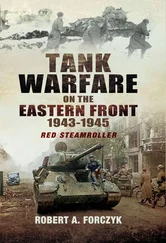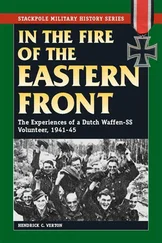5) It is to be guaranteed that the evacuated section of the population is able to keep all its livestock and property that it carries with it and that nothing is taken away so that it is possible for them to participate in the spring cultivation and partially secure its own supplies for the coming year in their allocated area. The slaughtering of pigs and small livestock should be permitted for those being led to the rear, if necessary.
6) In those areas where the food stocks ordered for supply are not fully used, they can be transferred to the troops.
The available cattle in the divisional areas – as long as it is not needed for the supply of the evacuating civilian population or to cover the most vital needs of the section of the population remaining behind – is to be made immediately available for butchering and use through the administratively responsible unit.
The independent collection of beef cattle by individual units remains prohibited and is to be prevented through the sharpest measures. Discipline suffers through uncontrollable slaughtering and requisitioning and a fair distribution is therefore made impossible.
While forced evacuations could result in chaotic upheavals for the civilians involved, as numerous deportations hastily took place with insufficient food or transport, others, such as this one, were well-planned and demonstrated the army’s desire to utilize them for the German war effort. The document also highlights the German emphasis on ensuring that the area’s economic goods would be kept from the advancing Red Army.
German occupation policy in the Soviet Union was thus in constant evolution between 1941 and 1944. At times, ideologically-inspired ruthlessness motivated the Germans to murder and starve millions of Soviet civilians under their control. This was contrasted by periods in which the army carried out more conciliatory policies designed to help civilians survive the rigours of occupation and hopefully contribute to the German war effort. Two constants, however, ran throughout the period of occupation. First, the mobilization of the Soviet Union’s material and manpower resources was the predominant concern of the army’s occupation policy. Second, violence remained the army’s primary means of dealing with the civilian population. Even during periods when the army attempted to win over the hearts and minds of the civilian population, the threat of violence remained present and the increasing partisan movement only exacerbated this tendency. The final document in this section demonstrates how engrained and matter of fact the application of mortal violence had become to the Ostheer . [48]
Civilians who clearly flee the approach of German soldiers are to be immediately shot. At a closer distance, they should first be called out to. If the appeal is obeyed, they are to be arrested and delivered to the [Staff] Section Ic.
Likewise all civilians are to be shot that attempt to oppose or escape any such measures, including evacuations.
This order is to be made known through the village elders in all towns and villages that have not been evacuated.
Chapter 6
Sustaining the German Army in the East – Replacements and Training
This chapter will look at three issues: how German troops were trained for their service in the east, what kind of replacements were sent to the Eastern front, and finally what measures the army undertook in addition to sending reinforcements in order to cover the high losses suffered during the war in the Soviet Union.
The German army was spilt into two main organizations: the Field Army for operations and the Replacement Army for recruitment and training. This relatively clear line between the institutions increasingly blurred as the war dragged on, especially due to developments on the Eastern front. The call for more men led to the forming of Reserve Divisions and Field Training Divisions, which were first created in mid-1942 and used for rear security, occupation tasks, anti-partisan warfare and coastal guard duty in the west, thereby freeing up forces for combat tasks in the east. On the other hand, decreasing time devoted to training, as well as a lack of weapons and equipment in the Replacement Army, denied a proper training to the recruits. Furthermore, the high losses of low-level leaders could not be replaced adequately. All of this forced frontline units to take over increasing numbers of training tasks.
The length of this basic training differed during the course of the war, not only according to crisis situations, but also between the different branches of the army. Twelve to sixteen weeks were usual for riflemen, with eight weeks the absolute minimum, while panzer crew members trained for sixteen to twenty-one weeks. Due to a permanent flow of information, as well as continual exchanges of officers, NCOs and men, the Replacement Army was kept well informed about the training necessities (although, as we will see, the question of achieving such necessities is altogether different). The information was channelled and summarized in guidelines for basic training every three to six months. The following source is the first such guideline from October 1941. [1]The introduction of the guidelines stresses a training that prepares for the conditions in the east by acclimating the soldiers to a spartan life and giving them a sense of the war (including the enemy’s typical behaviour) to overcome the first shock of the battlefield. At the same time, a feeling of superiority needed to be inculcated into the soldiers. This was an essential, yet often underestimated, aspect of German combat power and motivation. German soldiers would often fight in nearly hopeless situations, their confidence based on their belief in their own superiority as soldiers, as well as on willpower. Both attitudes were part of the education of the soldier (in comparison to the rather technical training on weapons and tactics).
1) The experiences of this war, especially of the campaign in the East, are to be used extensively for the training and education of the Replacement Army. It is essential that the Field Army’s experiences are brought to life in the training of the Replacement Army. The training must carry the whiff of war and be conducted so that after the conclusion of basic training, the recruit can be appointed to the field troops as a full-fledged fighter based on attitude, hardness, agility and military skill. Therefore, the imparting of these war experiences must initially take into account the recruit’s meagre powers of imagination and, with progressive training, allow him to grow into the life and spirit of a good field soldier and into modern combat. It is essential therefore that the self-confidence of the recruit is raised and that the conviction is roused that the German soldier can cope with any adversary and any difficult and dangerous situation through determined action, well-considered use of his weapon and his own courage.
2) The utilisation of war experiences can occur in following ways:
a) Drawing on war experienced officers and NCOs. These include: lectures by combatants, preferably with sketches or at the board, with the use of slides on small combat sections and individual deeds, the use of front reports and Wochenschauen [weekly propaganda movies] of the propaganda companies in a similar way, and stories at comradely gatherings, to give the recruits a vivid and clear picture of war’s reality.
b) Transfer those insights gained from under section a) into similar combat exercises, that correspond as near as possible to reality. Hereby the assigned enemy has to conduct themselves as the Russians or English fight. A short compilation on the Russians’ combat practices, as far as they concern small tactics, is produced in Appendix 1. The combat practices of the British are similar especially in their toughness und tenacity, their good camouflage, observation of the combat area and their devious conduct of war.
Читать дальше






![John Stieber - Against the Odds - Survival on the Russian Front 1944-1945 [2nd Edition]](/books/405234/john-stieber-against-the-odds-survival-on-the-russian-front-1944-1945-2nd-edition-thumb.webp)





